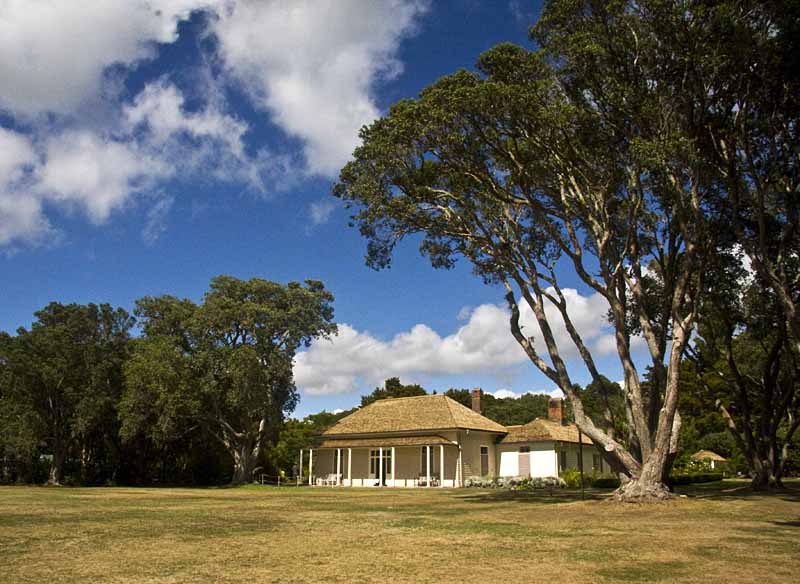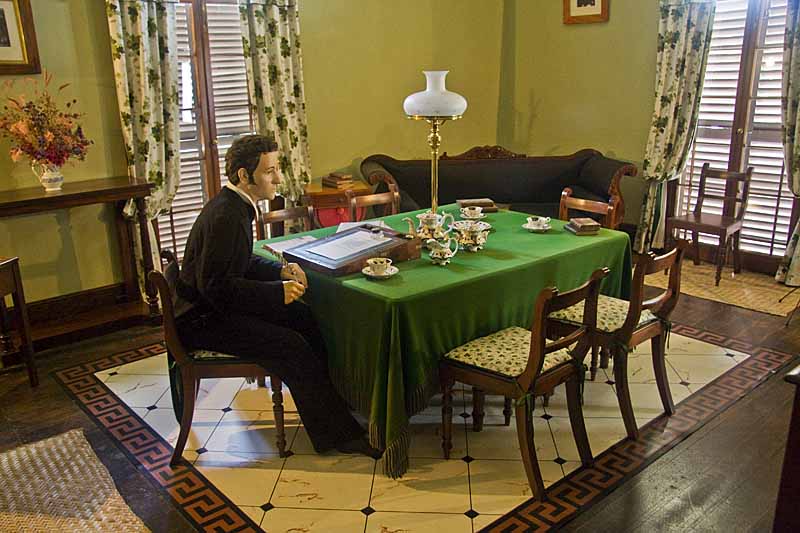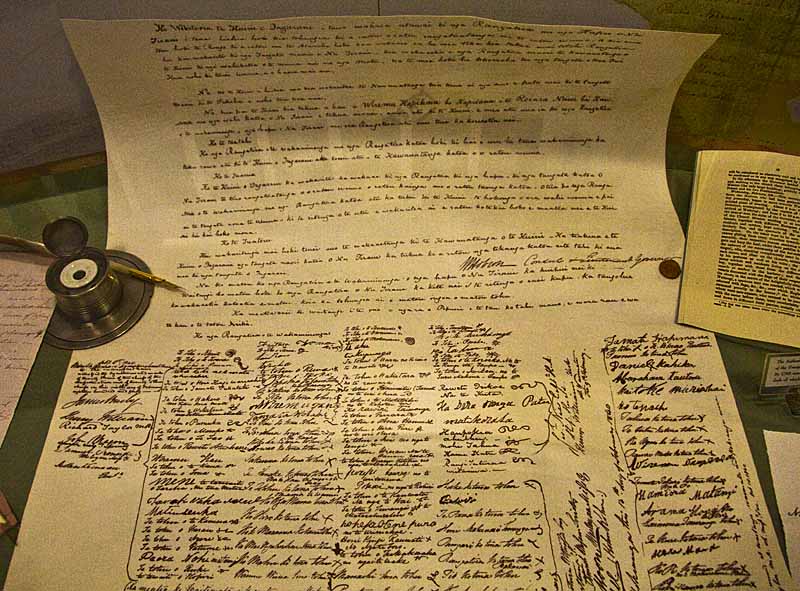A Trip to Australia and New Zealand
Waitangi & The Bay of Islands - Treaty Grounds

James Busby, a Scot by birth, was the British Resident (a diplomatic title) in the Bay of Islands at the time that the Treaty of Waitangi was negotiated and signed by the first of roughly 500 Maori chieftains. He had arrived in Waitangi in 1832 to assume his post and one of the very first things that he did was plant a vineyard - thus making him one of the very first vintners in New Zealand as well as the first diplomat assigned to what was to become a British Colony in just eight years after his arrival. In 1835, Busby, worried that the French had plans to occupy New Zealand, managed to convince a group of 35 northern Maori chiefs to sign the Declaration of Independence of New Zealand and declare themselves to be the United Tribes of New Zealand. With Busby's guidance the chiefs asked King William IV of Great Britain to be their protector. The Colonial Office replied favorably in May of 1836.

In 1837, William Hobson, an Irishman by birth, was captain of the HMS Rattlesnake. At the time, Busby felt the need of a show of force to help calm down tensions between various Maori factions. Hobson sailed to the Bay of Islands and together with Busby cooled things down. In 1838, Hobson returned to England and lobbied for a trading scheme in New Zealand that would be similar to the one then in place in India. (Hobson's proposal was not viewed favorably by the New Zealand Company, but he was well received by senior government officials.) In 1839, Hobson was appointed Lieutenant Governor under the Governor of New South Wales (Australia). He arrived in Waitangi to take up his duties on January 29, 1840, and together with Busby and James Freeman drafted the Treaty of Waitangi in a matter of a few hours and succeeded that same day in getting the signatures of the chieftains of the United Tribes of New Zealand that Busby had been working with for eight years. In November 1840 New Zealand's government was separated from that of Australia and on May 3, 1841, Hobson was named Governor of New Zealand.

Hobson died in 1842 and was succeeded by Robert FitzRoy, an Englishman through and through with ties to the royal family. FitzRoy's association with New Zealand started when he was captain of the Beagle in the early 1830s. Charles Darwin was FitzRoy's naturalist on board and the two men were close confidants during that voyage. They visited the Bay of Islands and it was then that Darwin contributed funds for the construction of the church in Russell. During FitzRoy's early tenure as Governor a prominent Maori chief, Hone Heke, cut down the British flagpole at Russell. FitzRoy simply rebuilt it and Hone Heke cut it down again. This happened four times and started what is now known as the Flagstaff War. It was one of the opening salvos in the Maori War. The New Zealand Company representatives in London undercut the governor politically and he was removed from office in 1848. (When Darwin published the Origin of Species, FitzRoy wrote and spoke in opposition to what he believed was an attack on religion.)

The Treaty of Waitangi is regarded to be the foundation document of New Zealand. It contains just three articles and was written in the English and Maori languages. There is considerable argument as to what the document means and this disagreement is exacerbated by differing interpretations of the Maori words chosen to represent English political/legal concepts that were not thoroughly understood by the Maori chieftains that made their mark on the piece of paper. Because the Maori considered the spoken word to be more important than the document itself, it is believed that many of the chiefs decided to sign it because of verbal assurances that were given to them by British representatives with the assistance of interpreters who may not have understood these concepts any better than the chiefs themselves. In some cases there are also charges of outright deceit and/or coercion.
